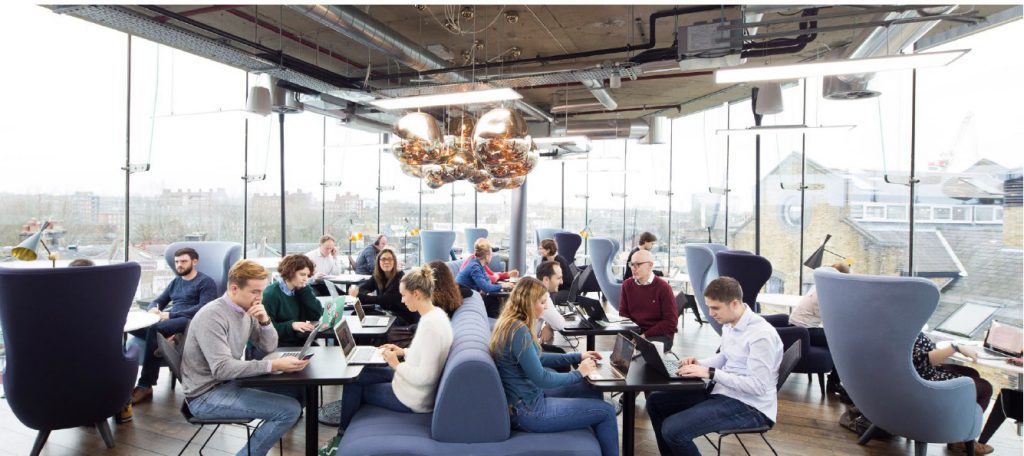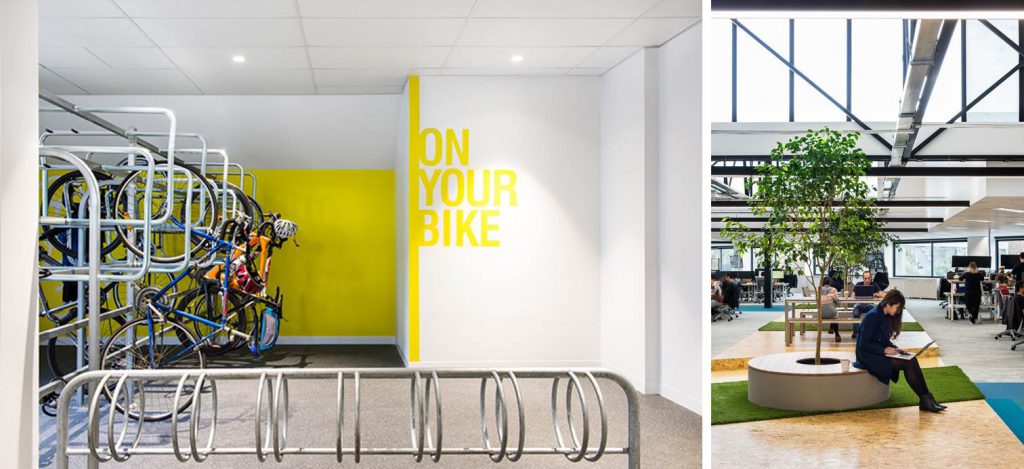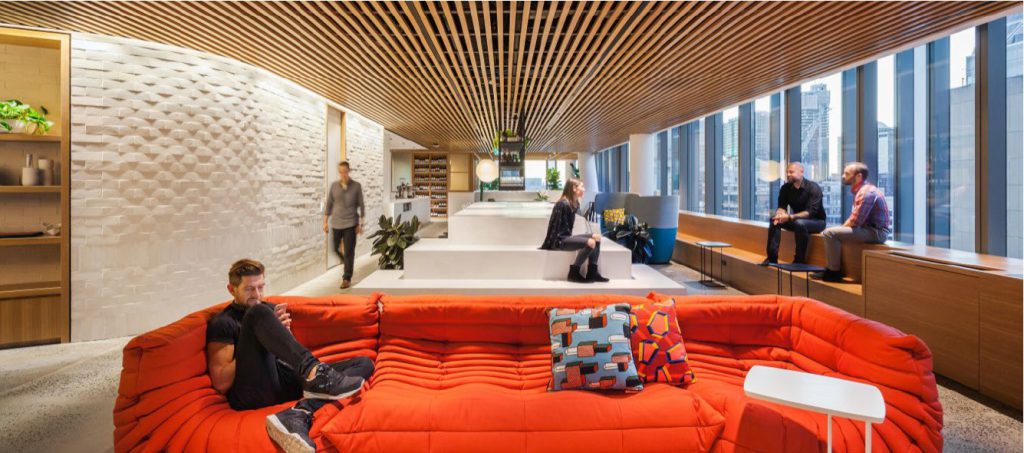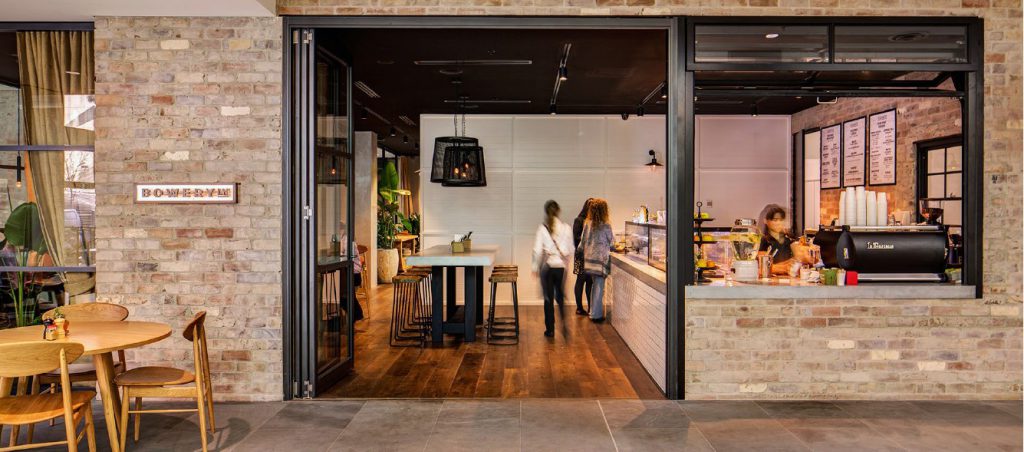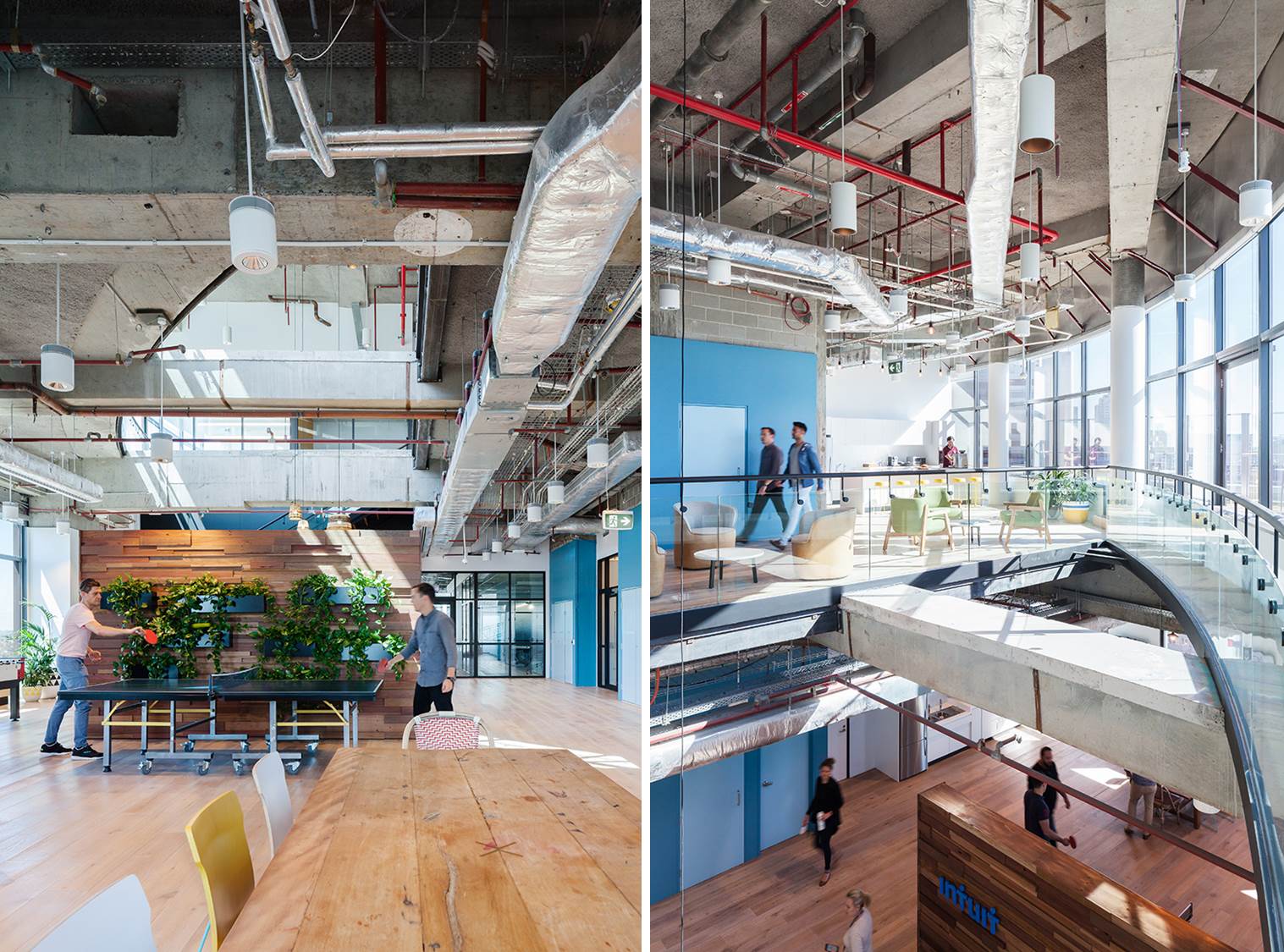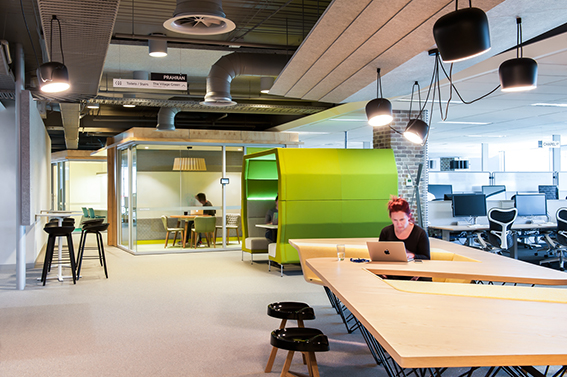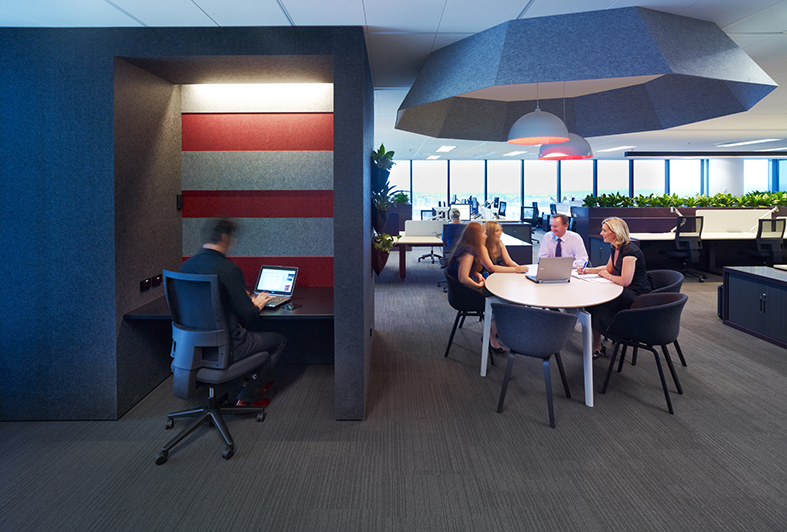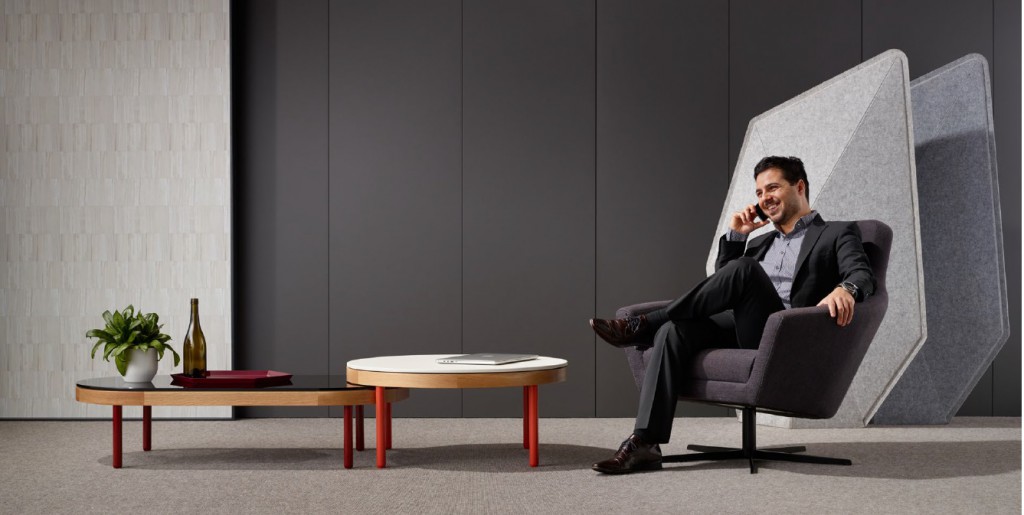These are the big trends we’re seeing regarding the future of workspaces.
1. Co-Working
A proliferation of co-working venues with sophisticated and comprehensive amenities previously only found in high-end corporate fitouts.
Internationally renowned British designer, Tom Dixon, has recently designed Interchange, a purpose-built co-working space in Camden, London – three shiny glass and metal buildings and over 7803 square metres (84,000 square feet) of co-working and office space to rent. Facilities include a restaurant, lounge, seven event spaces, members’ gym, hot desks, private offices, breakout areas, high-tech meeting rooms, stocked kitchens, ultra-fast Wi-Fi and technical support.
As Dixon suggests – “It’s the idea of creating a club rather than a conventional office space, with access to big rooms, semi-privacy and entertaining clients. If you get it right, people really want to come into work, bring families in at the weekend and be proud of the space. And the extraordinary view allows people to enjoy work.”
2. Health: motivating the workforce
A focus on minds, bodies, places and cultures to achieve worker health and wellbeing is a primary driver of workplace design.
These things are part of a bigger picture in which companies provide in-house gym and yoga facilities, massage services, nutritional advice, medical centres (including resident doctors), prayer rooms, quiet ‘chill-out’ spaces, green breakout areas and even fresh produce gardens. The implication is that the wellness program has to be designed into the building and be integral to the overall design of new workplaces.
3. Design for experience
Increasing influence of hospitality and residential models on workplace design to achieve a more experientially driven workplace.
Workplace design is moving away from a corporate, high-performance workplace towards something more ‘authentic’, which is to say more directly aligned with actual day-to-day life, an important part of which is social interaction and connectedness.
4. New networks
Specification of led lighting will expand to accommodate emerging technology in ultra-fast li-fi connections.
Li-Fi is a very simple system. It’s like an old-fashioned Morse code system – where you can switch the source on and off and, in so doing, send a signal. But the switching on and off happens at phenomenally high speed, way beyond the range of human vision. When you look at LED it appears to be statically giving out light, but it is, in fact (below the surface), switching on and off at very high speeds.
The end result is that you can use it as a digital or, if you like, binary system for communication. You can feed into the LED light source a data signal that can then be transmitted via this rapid switching system, which is then picked up by any one of a range of systems – your laptop, your phone, another lighting function like a switch.
It can be practically anything you can think of that can be operated digitally.
5. “Bleisure”
Business and leisure will increasingly come together in projects that reanimate our cbds and suburbs.
Australian CBDs will continue to become themselves ‘mixed use cities’, partly through new construction (especially of residential stock) and partly through the retrofitting of existing buildings for both commercial and residential use. If people are to be encouraged to live in the CBD, then appropriate amenity needs to be provided. This will involve activating precincts hitherto dormant, particularly after business hours.
Melbourne has already seen this happen… The mixed use model is proliferating in Sydney, most notably with Barangaroo… home to a projected 1,800 residents and 23,000 workers, with large areas of public space and hospitality venues.
6. Measuring outcomes
With increasing competition to attract and retain the best staff, workplace design is shifting not just to highly customised solutions reflecting the uniqueness of individual businesses, but also to a more driven workplace.
After all, if you are going to spend a large part of your waking life at work, that work space needs to give you a lot of support – and, indeed, Gensler is in the process of developing an Experiential Design Index (EDI) to measure just how people respond to the space in which they are working. According to Gensler’s Simon Trude: “All over the world, but especially here in Sydney with our tech clients, we are designing environments that are very authentic… We are moving away from the corporate, high performance workplace that has been done for so l
7. Deconstructed workplace
Expect flexible, reconfigurable and even transparent screens to respond to the need for modularity and instantly reconfigurable space.
As workspaces deconstruct and home spaces veer towards more broken plan configurations, room dividers are set for a revival. Last seen lurking in splendour in the 1970s (often in rattan or copper), the new look room divider is ceiling suspended and entirely modular, allowing a constantly evolving articulation of office or recreational space.
8. Focused work
Having been preoccupied for so long with quantitative performance, we are now seeing a shift to qualitative performance.
Having seen open and flexible environments introduced, even for traditionally conservative businesses such as law and accountancy firms, we expect to see a subtle correction to facilitate more focused work. This aligns with the embrace of difference – namely, a workplace that not only embraces, but welcomes healthy age and gender mixes, as well as differing work styles – the latter having been flagged in Susan Cain’s popular book, Quiet: The Power of Introverts in a World that Can’t Stop Talking.
9. Domestication of the workplace
Furniture and finishes will take their lead from more familiar, less corporate, palettes.
The loose furnishings are now more ‘domestic’ to allow for people to linger and commune over food. Finishes are more natural both in palette and materiality and, increasingly, of fabric. Faux natural materials are becoming more common – for example, ‘timber’ panelling or floor tiles. Some areas of the flooring can even be carpeted to reflect the domestic feel. In general, the palette is more colourful and more natural.
